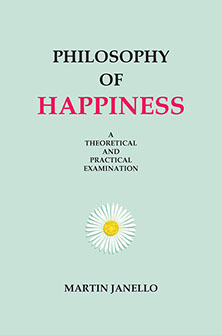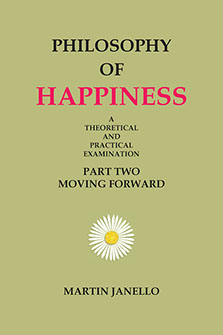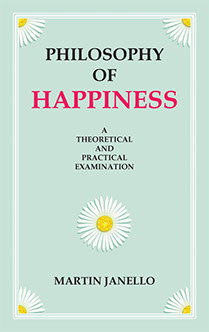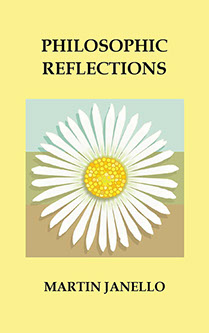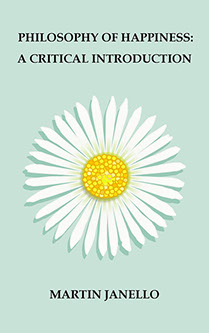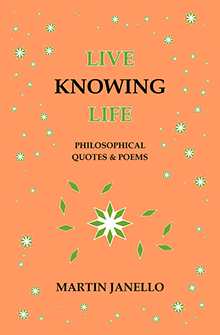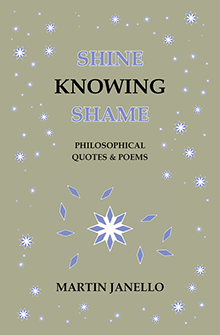
Publicity
1. Curriculum Vitae.
Martin Janello was born and grew up in southwestern Germany. He studied Law and Philosophy at the University of Heidelberg. After completing the coursework for the First State Exam in Law and becoming a PhD candidate in Philosophy, Martin moved for family reasons to Arizona, where he graduated with a doctoral degree in Law from the University of Arizona. Upon taking care of making a living by practicing transactional business law, Martin returned to his passion for subjects at the intersection of natural and human law and philosophy.
subjects at the intersection of natural and human law and philosophy.
More particularly, his areas of study and work focus on two intimately connected aspects of human-centered philosophy: a) Normative Philosophy, the study and application of individual and societal human principles, and b) the Philosophy of Happiness, which deals with securing, improving, and optimizing of human existence and thriving. Together, these subjects address the question how human affairs should be ordered. Martin had concluded since his studying days that philosophy failed or misled humanity in many of these existential matters, and that a new beginning was required to secure a brighter future. As Martin revisited these concerns, his work soon revealed exhilarating opportunities to significantly assist humanity. Since 2006, he has dedicated himself to this purpose.
326x244.jpg?crc=434904777) 2. Martin's Philosophy.
2. Martin's Philosophy.
In many respects Martin's philosophy is a product of his studies in Heidelberg. Dissatisfied with Classic Greek and German Philosophy and other European schools of thought, he had researched Chinese, Indian, Mesopotamian, Persian, and Egyptian philosophy. This revealed some deeper insights about connections of world philosophies. But it left Martin disappointed with their ability to describe a coherent system, and placement of humanity and individual humans in it. Frustration over this caused him to discount Philosophy as a career choice and turn to the more practical concerns of Law. Eventually, these and the intervening distance to his former studies inspired Martin to revisit his systematic questions and try to answer them.
The result of this labor is a radically, from the ground up new theoretical and practical philosophy focusing on human wellbeing and all that is required for or resulting from it. Martin's philosophy can be summarized as the balance and harmonic advancement of personal existence, humanity, and the non-human environment through the development of individual philosophies. The defining force in this philosophy is happiness as an intensely individual but also systematic phenomenon that shapes the human condition, human destiny, and matters beyond up to a cosmic scale.
3. Work and Findings.
This inference may appear surprising to many. However, Martin's writings meticulously and systematically lay out how happiness holds the key to existential concerns beyond its commonly associated connotations. Some proof of its importance, and the dangerous  deficit of it, are readily evident. We only have to look at people's misery, and their negligence and abuse toward themselves and their surroundings. Martin has a lot to say about how we can change this - and that change it we must for our, humanity's, and our world's sake.
deficit of it, are readily evident. We only have to look at people's misery, and their negligence and abuse toward themselves and their surroundings. Martin has a lot to say about how we can change this - and that change it we must for our, humanity's, and our world's sake.
Toward this goal, he advocates a reorientation of philosophy onto individuals as sovereign centers of mindful decision-making. Martin is trying to assist his readers reach and maintain such authority and self-determination through the promotion of their personal philosophies. The essential initiator and mechanism for this is that they perceive, think, and feel for themselves. Persons growing their own bearings have a better chance to learn how they and their settings are connected. They are more considerate of themselves, others, and the non-human environment. They are less gullible, timid, or prone to seek affirmation or leadership from others. Their reflections form the organizational and energetic cores from which the elevation and optimization of the human condition can flow.
4. Readers’ Philosophies.
Advancing this objective ties back to Martin’s philosophy and purpose. But he does not tell readers what their philosophies should be. Rather, he describes common conditions and issues of the human experience and suggests methods for self-realization in both meanings of the word. That individuals make up their own minds, including about what he writes and says, is a vital element in this process and the operative underpinning of his philosophy. He is confident readers will find proper balance and harmony if they come into their own and apply their given faculties. The central message of Martin's philosophy is that we each can be, should be, and have a right to be philosophers of our existence and to take considered charge of our person and circumstances.
Martin engages with the public on X, Facebook, Instagram, Bluesky, and increasingly TikTok, as well as the Philosophy of Happiness YouTube Channel. See more about this on the Social section of this site. To enable subject-focused interaction that inspires participants in being philosophers of their own reflected existence, he discusses aspects of his work in a series of videos titled "Public Philosophy Minutes". For more information about this initiative to involve the public in philosophy, click the Series Preview video thumbnail.
The Forum and Blog sections of this website provide interaction opportunities for longer contributions.
Martin also participates in exchanges with scholars, institutions, students, and visitors of the Philosophers on X List, which he curates. See 11.a) in the Resources section for more information on this List.
Martin is further open to limited appearances, including book signings and interviews. Inquiries can be directed to Palioxis Publishing.
6. Accessing Martin's Work.
All of Martin's philosophical work is freely accessible on this website, through YouTube, and PhilPapers. The central expression of Martin's philosophy is his Philosophy of Happiness book. For more information and a review copy, see the Book section. And note the audio book edition, divided by chapters, on this website, paired with corresponding PDF chapter downloads of the text from PhilPapers. The audio version is also available in the subtitled Audio Book playlist on the Philosophy of Happiness YouTube Channel.
Short of reading or listening to the book, this website offers means to get acquainted with the motivations, purposes, and approaches of Martin's work. The book's Table of Contents conveys an initial impression. See 2.a) of the Resources section. Next in line is the FAQ section, which answers 24 questions about Martin's work. And the 10 entries from the Forum section might be looked upon as supplements.
Martin has also authored a number of articles regarding the development of a personal philosophy. Together with introductions contained in his Philosophy of Happiness book and this website, they are linked in the Intros section. Most of these writings are available in audio format. Two of the introductions have been produced as videos. The thumbnails below link to these directly.

Beyond such more focused sources, Martin explores topics surrounding, illustrating, or fostering a personal philosophy in articles of the Blog section, essays of the Philosophic Reflections book, and quotes and poems of the 6-part Knowing series of books.
7. Published Books.
Depicted below are book plates of Martin's books. More information about these books can be accessed by clicking on their plates.
Philosophy of
Happiness
E-Book
Philosophic
Reflections
E-Book
Philosophy of
Happiness: A Critical Introduction
E-Book
Use of the images included in this Publicity section is permitted pursuant to the underlined part of the “Electronic Materials Restrictions” clause of the Terms of Use, subject to all other Terms of Use.
Climb Knowing Aim
Paperback and E-Book
Knowing Won't Let Darkness Reign
Paperback and E-Book
© 2013-2025 BY MARTIN JANELLO

301x169.png?crc=4259642692)
301x170.png?crc=3780948545)
300x169.png?crc=3931169374)
